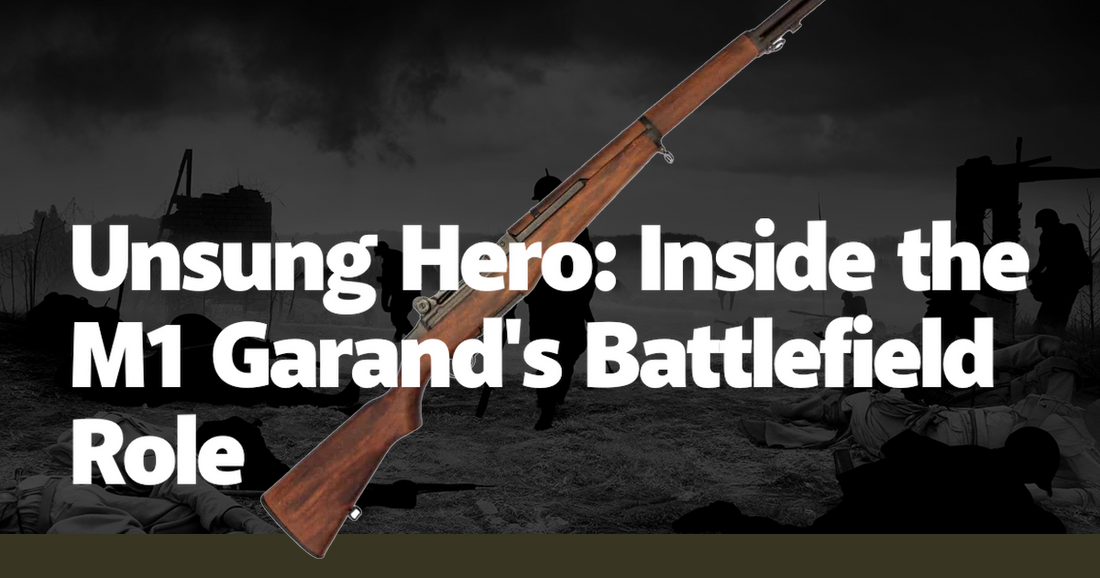The M1 Garand, often overshadowed by its more glamorous counterparts like the M16 and AK-47, holds a storied yet underappreciated place in military history. This semi-automatic rifle, designed by Canadian-American John Garand, was a revolutionary leap forward in firearms technology when it was adopted by the U.S. military in 1936. Unlike the bolt-action rifles that preceded it, the M1 Garand offered an unprecedented rate of fire and reliability, features that would prove indispensable on the battlefields of World War II and beyond. As General George S. Patton famously remarked, the M1 Garand was "the greatest battle implement ever devised," a testament to its pivotal role in the Allied victory.
The M1 Garand's impact was first felt during World War II, where it became the standard-issue rifle for U.S. infantrymen. In the dense jungles of the Pacific Theater, soldiers appreciated the rifle's durability and ease of use. Stories abound of soldiers who, despite the harsh conditions, found the M1 Garand to be a steadfast companion. One such tale involves a soldier named Private First Class Harold Clark, who, during the Battle of Guadalcanal, relied on his M1 Garand to fend off an ambush. The rifle's semi-automatic capability allowed him to deliver rapid, successive shots, turning the tide of the skirmish in favor of his platoon. This anecdote is just one of many that highlight the rifle's reliability under fire.
In the European Theater, the M1 Garand again proved its worth during the D-Day landings and subsequent battles across France and Germany. The rifle's eight-round en bloc clip allowed soldiers to maintain a high rate of fire, crucial during the intense urban combat that characterized the liberation of Europe. Veterans like Sergeant John Basilone, who was awarded the Medal of Honor for his actions during the Battle of Guadalcanal, often spoke of the rifle's effectiveness in both offensive and defensive operations. The M1 Garand's ability to deliver sustained fire without frequent reloading gave American troops a significant advantage over their adversaries, who were often equipped with slower, bolt-action rifles.
The rifle's design also contributed to its battlefield success. The gas-operated mechanism, which used the expanding gases from fired cartridges to cycle the action, was a marvel of engineering. This system not only reduced recoil but also ensured that the rifle could function reliably in various environmental conditions. Soldiers in the frigid Ardennes during the Battle of the Bulge and those in the sweltering heat of North Africa both reported that their M1 Garands performed flawlessly. This adaptability made the rifle a versatile tool in the hands of American infantry, capable of meeting the diverse challenges of World War II.
Despite its many strengths, the M1 Garand was not without its quirks. The distinctive "ping" sound made by the ejection of the empty en bloc clip, while often romanticized in popular culture, was a double-edged sword. On one hand, it signaled to the soldier that it was time to reload, a crucial piece of information in the heat of battle. On the other hand, it could potentially alert the enemy that the soldier was temporarily out of ammunition. However, many veterans have downplayed this supposed drawback, noting that the chaos of battle often masked such sounds and that experienced soldiers developed strategies to mitigate any potential risk.
The M1 Garand's legacy extends beyond World War II. It saw continued use during the Korean War, where its reliability and firepower were once again put to the test. In the harsh conditions of the Korean Peninsula, from the frozen hills of the Chosin Reservoir to the rugged terrain of the Pusan Perimeter, the M1 Garand proved to be an invaluable asset. Soldiers like Lieutenant Colonel Don Faith, who was posthumously awarded the Medal of Honor for his actions during the Battle of Chosin Reservoir, relied on the M1 Garand's robust performance to execute critical missions under extreme duress.
Even as newer rifles began to emerge in the 1950s and 1960s, the M1 Garand continued to serve in various capacities. It was used by military training programs, ceremonial units, and even saw limited action in the early stages of the Vietnam War. Its influence can be seen in the design of subsequent rifles, such as the M14, which retained many of the M1 Garand's features while incorporating modern advancements. The M1 Garand's enduring legacy is a testament to its innovative design and the pivotal role it played in shaping modern infantry tactics.
In the annals of military history, the M1 Garand stands as a symbol of American ingenuity and resilience. Its contributions to the Allied victories in World War II and the Korean War cannot be overstated. While it may not have the same cultural cachet as some of its successors, the M1 Garand remains an unsung hero whose battlefield role was critical in some of the most significant conflicts of the 20th century. For the soldiers who carried it, the rifle was more than just a weapon; it was a trusted ally in the fight for freedom and democracy. As we reflect on its storied past, the M1 Garand deserves to be remembered not just as a piece of military hardware, but as a key player in the epic saga of modern warfare.

